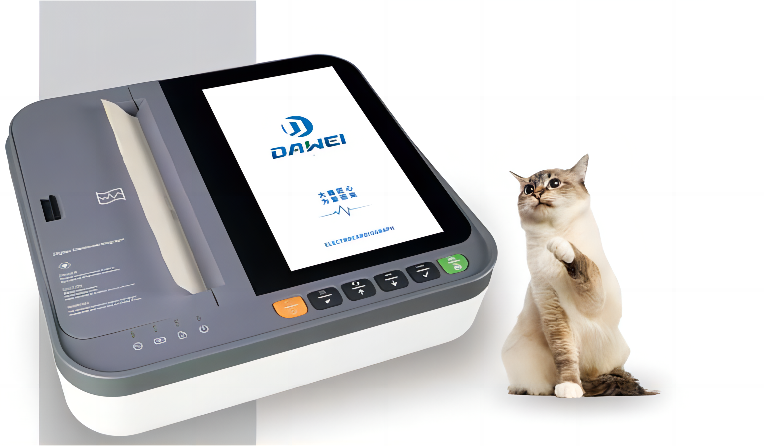Veterinary electrocardiography (ECG) plays a crucial role in diagnosing and monitoring cardiac conditions in animals. The DE-12 veterinary ECG machine is a sophisticated device designed to accurately capture and analyze electrocardiographic signals in veterinary patients. In this guide, we will explore the step-by-step process of interpreting ECG readings using the DE-12 ECG machine.
Step 1: Preparation
Before conducting an ECG, ensure that the animal is calm and restrained appropriately. Shave the areas where the electrodes will be placed to ensure good contact with the skin. Apply conductive gel to the electrode pads to reduce impedance and improve signal quality.
Step 2: Electrode Placement
The DE-12 ECG machine supports various lead configurations for acquiring ECG signals. Select the appropriate lead configuration based on the clinical requirements and the suspected cardiac condition of the animal. Common lead configurations include the standard 12-lead ECG, single-line, 3-channel, and 6-channel configurations.
Step 3: Acquiring ECG Signals
Once the electrodes are placed, initiate ECG acquisition on the DE-12 animal ECG machine. The high-speed and high-sensitivity recording system ensures accurate capture of the ECG waveform. The 10.2-inch color LCD screen provides real-time visualization of the ECG tracings.
Step 4: ECG Analysis
The DE-12 animal ECG machine is equipped with an automatic ECG analysis function, which provides rapid interpretation of the ECG waveform. The system automatically detects abnormalities such as arrhythmias, conduction disturbances, and chamber enlargement. Additionally, the machine calculates the heart rate and highlights any deviations from the normal range.
Step 5: Reviewing the ECG Tracing
After the ECG is completed, review the ECG tracing carefully. Pay attention to the shape, amplitude, and duration of each waveform (P wave, QRS complex, and T wave). Evaluate the rhythm and assess for any irregularities or abnormalities.
Step 6: Diagnosis and Reporting
Based on the ECG findings, make a diagnosis and formulate a treatment plan accordingly. The DE-12 animal ECG machine allows for the printing of detailed measurement and analysis reports, which can be included in the patient’s medical record for future reference.
The DE-12 veterinary ECG machine is a valuable tool for veterinary practitioners in the diagnosis and management of cardiac conditions in animals. By following the steps outlined in this guide, veterinarians can accurately interpret ECG readings and provide optimal care for their patients.
Post time: Feb-20-2024




